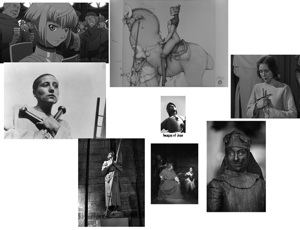Order McKenzie books online with a credit card
Bring Jamie to your school or district for a great workshop.
March Issue
Vol 28|No 4|March 2018

Photography: the New BasicBy Jamie McKenzie (about author) There are cameras everywhere! Or phone cameras. Should this have an influence on schools and school programs? Of course! We should call photography, "The New Basic," as images now permeate much of the communication that takes place in our society. Schools should make sure students are equipped both to interpret images and to produce images that are powerful and artistic. Once an elective in some schools, a course in photography should now be mandatory and visual literacy should be a constant companion.
If you own a phone . . . In 2014, 66 percent of the households in the United States owned a digital camera, but the population has moved on to camera phones. According to some studies, 85% of the photos being taken in 2017 were shot with camera phones. I argued then that schools could help students to move from mere snapshots to images that involved thought, skill and artistry. This article builds on the suggestions offered in "The Selfie goes to school." Skillful PhotographsThere are several dozen photographic concepts and strategies that all students should grasp and practice by the time they leave eighth grade. Because there are many great Web sites devoted to these concepts and strategies, I will only give a few examples and then list some of these Web sites.
If you do a Google search for "shooting great photos," you will find dozens of very helpful sites, many of which would prove useful to students:
Requiring photography in school projectsMany school assignments should now require the inclusion of pertinent images. While teenagers and elementary age students spend many hours taking photos for Instagram and SnapChat, they are rarely asked to shoot a dozen for a school project. They may sometimes paste a single image into a biography being written for a class, but effective use of images is not yet a priority in many schools.  Some of these assignments might require the collection of more than a dozen images from the past, while others might require new photographs produced by the students. In preparing a report on what might be done to address a local problem like traffic congestion, for example, the students might use photography to dramatize the issue. Some students photographed the recent school walkouts commemorating the Parkland students who died as an assignment for their journalism class. Visual and Media LiteracyBecause images now permeate communication, students must become savvy about their use and abuse or risk becoming unwitting and easy targets for propaganda, marketing and manipulation. Previous articles in FNO have explored this challenge in great detail:
Visual DevicesIn the previous century, students learned in English classes about "literary devices." They learned about dozens of devices such as metaphors, similes and deus ex machina. The New Mexico Media Literacy Project at http://www.nmmlp.org provides many free downloads to support critical analysis of media as well as a range of products to support curriculum development in this area. Free downloads include the following:
How to take action in our media cultureOur students must know how to protect themselves in the marketplace, writing persuasive complaint letters that include powerful images and turning to social media if their complaints fall on deaf corporate ears. In September of 2017, I had a very bad travel experience at the hands of Lufthansa and have mounted a social media campaign that has reached more than 50,000 people on Flickr. Images played a very important role in dramatizing my bad experience. 
It has been five and a half months since Lufthansa blocked me and the two kitties from flying home from Bucharest on September 29 despite having approved and confirmed two seats and two cat spots well in advance. Modernizing the curriculumDevoting attention to images, imagery, photography and visual literacy is no longer a luxury or a peripheral challenge for schools. Given the ongoing weight of such images in most forms of modern communication, our students must be savvy and skillful as producers and consumers of images in order to participate fully in the society. A school's failure to stress images, imagery, photography and visual literacy is a failure to keep up with the times and a disservice to the students. |
Written materials, art work and photography on this site are copyrighted by Jamie McKenzie and other writers, artists and photographers. Written materials on these pages may be distributed and duplicated if unchanged in format and content in hard copy only by school districts and universities provided there is no charge to the recipient. They may also be e-mailed from person to person. All other uses, transmissions and duplications are prohibited unless permission is granted expressly. Showing these pages remotely through frames is not permitted. FNO is applying for formal copyright registration for articles.
|



